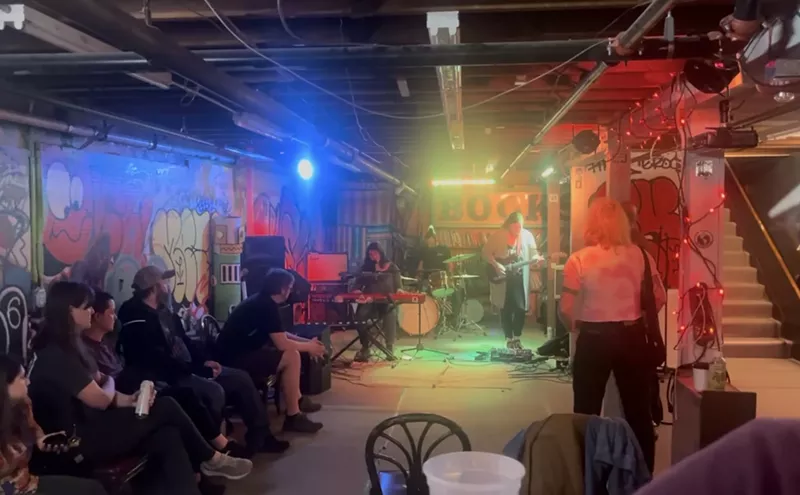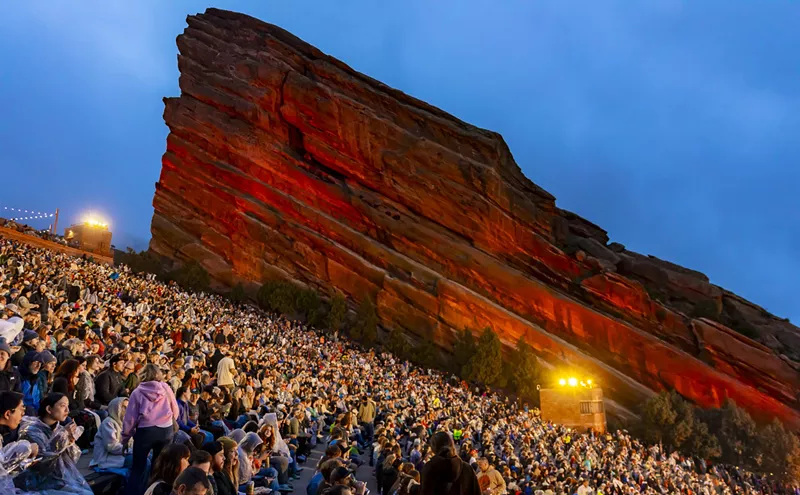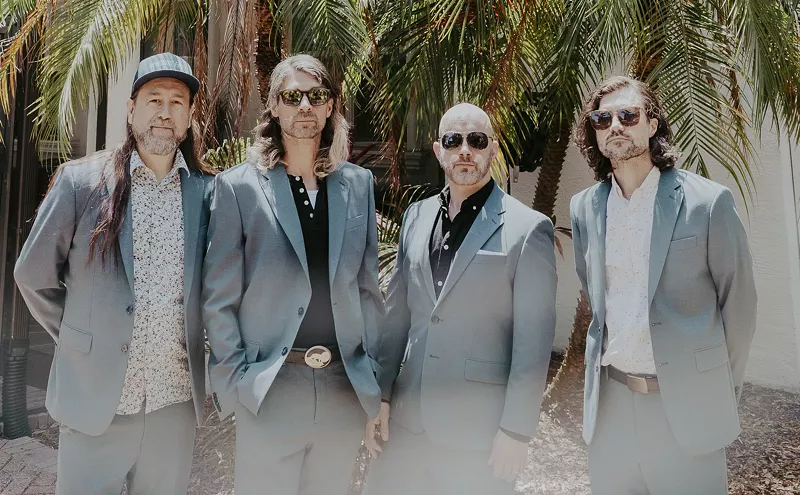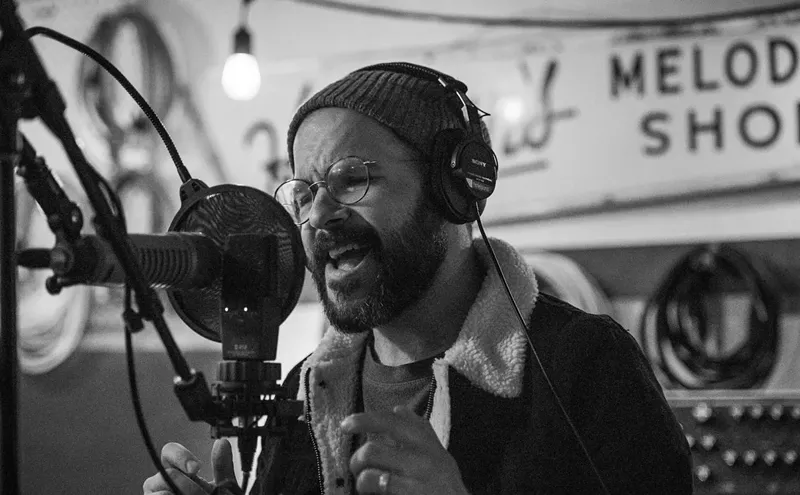More than being one of the best selling albums of all time, more than having the most recognizable album cover the world over, Pink Floyd's Dark Side Of The Moon was a cross-cultural, trans-generational album that connected with audiences on issues of death, greed, life-purpose and the horrors and triumphs of mental illness. It also proved that white English boys could still take the blues in unprecedented and yet ultimately authentic directions. Today marks the fortieth anniversary of this celebrated album, and while it should be appreciated as an artifact of its time, Dark Side Of The Moon is just as palatable for the medicated-millennials of today as it was for depressed hippies in 1973.
See also: - Review: The Flaming Lips take on Dark Side of the Moon at Red Rocks, 8/3/11 - The Stooges' Raw Power turns forty today - Album Anniversary Archives (Beatles, Jimi Hendrix, Velvet Underground, New Order)
Beyond all the existential issues that fueled Roger Waters's lyrics on Dark Side, the album is also largely an exorcism of their former identity, primarily what David Gilmour referred to as "that psychedelic noodling stuff" that dominated their work for several years, as well as confronting the abandonment of their former leader, the late songwriter, Syd Barrett, who died in 2006.
The original group was centered around Barrett, who took the band -- and the emerging London pop scene -- in a brilliantly creative and aesthetically moving direction, which was fueled in part by his organic genius, but also by the Herculean amount of psychedelic drugs he was ingesting, which inevitably complicated the mental illness he was born with and lead to his demise as a functional member of the group.
After Barrett's departure in 1968, he was replaced by friend and locally known blues-musician, David Gilmour, and the band spent the next few years making highly ethereal, experimental albums and film soundtracks -- which have, for the most part, been unfairly dismissed by history and record buyers.
It was with the song "Echos," off the band's 1971 album, Meddle, that marked a new direction thematically for songwriter Roger Waters, who, in a Rolling Stone interview, described the lyrics as "the potential that human beings have for recognizing each other's humanity and responding to it, with empathy rather than antipathy."
Rehearsals for what would become Dark Side began in 1971 in a South London warehouse that belonged to the Rolling Stones. "I'm not sure how much writing happened there. More 'lets play E minor and A for an hour two,'" Waters recounted. While Waters came with plenty of lyrics, the band had bits and pieces of things they'd worked on separately and collectively. One hangover from Rick Wright's composition for the film Zabriskie Point would become the loose structure of "Us And Them," while a leftover from Waters's work on the film The Body, became the intro for "Breathe."
"We wanted to move forward in an experimental way, yet retain melody," remembered Gilmour. After a few years of writing glacially paced instrumentals, the band were able to take that type of freedom and playfulness and apply it to disciplined songwriting. This happened to coincide with the philosophical questions of the then 28-year-old Roger Waters was mulling over in his own mind.
"I'd suddenly realized that year that life was already happening," he recalled. "I think it was because my mother was so obsessed with education, the idea that childhood and adolescence was about preparing for a life that was going to start later. I suddenly realized that life wasn't going to start later. At any point you can grab the reigns and start guiding your own destiny."
This thread of existential questioning reaches its most eloquent and foreboding on the song "Time."
Kicking around on a piece of ground in your home town
Waiting for someone or something to show you the way
. . . And then the one day you find ten years have got behind you
No one told you when to run, you missed the starting gun
. . . The sun is the same in the relative way, but you're older
Shorter of breath and one day closer to death
During the recording of this track, producer Alan Parsons (later to form the prog rock group, The Alan Parsons Project) mentioned that he had been commissioned to record a series of ticking and ringing clocks for an unrelated project. The recording was used as an intro to the song, which added to a host of other experimental recordings done collectively and separately by the group. In a later interview for Rolling Stone, Roger Waters recounts an experiment he performed at his home for the tape loops that would be used on "Money."
"I made those recordings in a shed at the bottom of the garden, throwing coins into a big industrial bowl that my wife used for mixing clay. I recorded those sound effects on my first proper tape recorder, chopped them up and glued them together, stuck them in the machine, put a mike stand there to hold tape taut, and off we went."
Going into the recording, Rick Wright already had most of the instrumental for "Great Gig In The Sky," worked out, with later additions from the band. The idea of getting some female vocal work on the album had been floating around, and Alan Parson's suggested 22 year old session musician Clare Torry.
Recalling the experience to John Harris in his book, Dark Side of the Moon, Torry remembers, "They said, 'Try some longer notes,' so I started doing that a bit. And all this time, I was getting more familiar with the backing track...That was when I thought, 'Maybe I should just pretend I'm an instrument.' So I said, 'Start the track again.' One of my most enduring memories is that there was a lovely can [headphone] balance. Alan Parsons got a lovely sound on my voice: echoey, but not too echoey. When I closed my eyes -- which I always did -- it was just all-enveloping; a lovely vocal sound, which for a singer, is always inspirational."
In the history of rock, these types of avant-garde exercises typically fall into the category of "self indulgent," and will often be dismissed by critics and fans. But because of their years tinkering in this medium, the members of Pink Floyd were able to take their groundbreaking use of sequencers, tape-loops, sampling and synthesizers and somehow make it accessible. Much of this can be attributed to Gilmour's insistence on retaining melody inside the work, as well the band's early history of rooting itself in American Blues and R&B.
During their psychedelic heyday with Barrett, the slide-guitar instrument was used to induce a climactic anxiety -- with Barrett often favoring a zippo lighter to dance up the neck of the guitar -- but in tracks like "Breathe," it was applied with a more calming, opiate affect, which connected with rural American listeners who were steeped in the lachrymose country music of Hank Williams and Webb Pierce.
Beyond the predictable music fans of the early '70s booming rock industry, Dark Side Of The Moon became the soundtrack to the crew-cutted, tobacco spitting, good ole boys and girls of the rural South and Midwest. It would go on to sell fifty million copies worldwide, with nearly eight million of those sold in the U.S. after 1991.
Americans of all walks of life purchased and repeatedly listened to Dark Side, playing it in honkey-tonk jukeboxes and night-crawler hunting eight-track stereos, which is amazing, considering the band had spent the last seven years as an experimental pscyhedelic group in the drugs-and-fuzzy-vests world of sixties London.
In the 1984 dance-against-the-man, coming of age film, Footloose, a young girl has to decide between the square-jawed farm-hand boyfriend and the sparkly-eyed city boy; in a blatantly symbolic scene, she straddles two cars while soaring down the highway, one being the charming farm-boys pickup truck, representing the small-town life she wants to leave behind. And in the back window of that pickup is a bold-sized sticker of the Dark Side Of The Moon album cover.
Follow @Westword_Music












